"Our objective is for HS2 to stop at Old Oak Common. I don’t know entirely where Old Oak Common is, but it is a jolly good place for a train to stop. That is my view of Old Oak Common.”
So said anti-HS2 agitator Stanley Johnson, father of current Mayor of London Boris. He was speaking at a public meeting in 2014 against the proposals for HS2 - and in particular the plan for a complete redevelopment of Euston and a large-scale widening of the railway’s approach to it, in order to accommodate the additional tracks.
Until very recently, unless you lived and worked in the vicinity, you had worked on the railway or you were an enthusiast, you had probably never heard of Old Oak Common. It was that magical, faraway place between Harlesden and Acton where railway-related things happened, but not much else.
And pass by this otherwise unremarkable part of West London on the Great Western Main Line, and the one thing you certainly won’t see is gnarled, aged oak trees surrounded by green pastures. But as a railway centre it has always been important.
Old Oak Common is home to a number of railway depots, most famously dating back to steam days but also more recently the former Eurostar depot known as North Pole.
Today it is a crucial maintenance hub for pretty much every train that runs into and out of Paddington - from the long-distance High Speed Trains operated by First Great Western to the airport electric multiple units for Heathrow Express/Connect, the Class 180 Adelante diesel multiple units for FGW and open access operators, the Night Riviera Sleeper stock and Thames Turbo DMUs for local and regional trains.
It has also been used recently as a temporary base for the storage of Crossrail’s tunnel segments for transporting to the Royal Oak portal site.
Even so, much of this vast, expansive swathe of railway land is currently redundant. But that is about to change, with Old Oak Common set to grow in importance over the next 15 years.
The site has been repurposed as a key maintenance depot for the Intercity Express Programme Class 800/801 fleet with effect from later this year, while a planned station and ‘super hub’ will place the area at the heart of rail connectivity.
Regeneration is a huge part of why Old Oak Common has been selected for redevelopment. The area sits across three London boroughs (Hammersmith & Fulham, Ealing and Brent), with land at Hammersmith & Fulham identified as a regeneration area within the borough’s Local Plan. And the planned station and ‘super-hub’, with an integrated package of local transport investment, is envisaged to attract a potential 19,000 new homes and 90,000 jobs.
High-level assessment of the capacity, phased over a 30-year period, has shown that the planned level of development around Old Oak Common could release substantial economic value, generating a GVA (Gross Value Added) of approximately £50 billion, and a GVA to the specific London economy of £5.6bn. The GVA for the wider UK economy could be as much as £4.3bn, while the Treasury could reap £1.6bn in taxes. Council tax revenue for local authorities could contribute £16 million every year.
The area around the station interchange - North Acton and Willesden Junction (Old Oak North) - is envisaged to be largely residential, with a commercial hub around the HS2 station.
More broadly, the wider Park Royal industrial area (described as ‘London’s bread basket’ because of its crucial role in providing sandwiches to nearby Heathrow) could have its existing focus enhanced. The proposed Old Oak Common Mayoral Development Corporation expects that industrial, waste or commercial uses displaced from the ‘core sites’ could potentially be relocated to the main industrial area.
Aside from the proposals to develop this large swathe of industrial land between Old Oak Common Lane, Wormwood Scrubs, Scrubs Lane and Willesden Junction, Johnson Senior is correct - Old Oak Common will be a future station.
It is expected to open in 2026 and will serve HS2 (which will rise up from a tunnel underneath central London), the Great Western Main Line (including Crossrail) and the London Overground network. New platforms are planned for the northerly part of the area (part of Willesden Junction, adjacent to the West Coast Main Line).
It has been described as West London’s answer to Stratford, and the similarities are clear.
But as an interchange, Old Oak Common has the potential to be considerably more important than any other station in London (perhaps even Euston) as southern England’s main high-speed hub railway station. It could even end up being more important than other historic central London rail termini, in that the North of England, the East and West Midlands, North and South Wales, the whole of the West Country and many parts of London will be considerably more accessible.
Good connections will also be available from Crossrail trains calling at Old Oak Common that will terminate on the extremities of East Anglia and Kent. And Scotland’s principal cities may well be added to that list when HS2 plans develop in the 2020s and 2030s.
After a contract between Transport for London and Bombardier was signed in February 2014, covering the supply and delivery of 65 new Bombardier trains for Crossrail, the way was paved for the Old Oak Common depot to be constructed - with Bombardier also responsible for the trains’ maintenance.
After it is built, the depot will be the sole maintenance facility for the Crossrail fleet, and will be used to stable 33 trains during the night. They will be cleaned and maintained in readiness for the start of service the following day.
The depot site is located on long-established railway land that until last year had been used as a concrete segment production factory for the core Crossrail tunnels. This took the place of the former locomotive depot and the area known as the ‘Coronation Sidings’.
The site was taken back in March 2014, and with the demolition and clearance of the old buildings now complete, main construction of the depot is now under way (and will continue throughout 2015). Contractors have begun sinking piles for foundations and drilling the boreholes for the renewable energy system (up to 200 metres deep) that will heat and cool the depot.
“The work at Old Oak Common depot is the next step as we gear up to deliver a brand new railway in the capital to provide much-needed additional passenger capacity,” says TfL Director of Operations for Crossrail Howard Smith.
“TfL-run Crossrail will help cut journey times, making it easier for people travelling across the city, and will create jobs and support growth and regeneration along the route.
“When fully operational, this depot will provide vital support to ensure our brand new train fleet offers a high standard of service for our passengers.”
The new depot is being built for TfL by Bombardier Transportation UK Ltd, supporting 260 construction jobs in the UK. When fully operational the depot will support a further 80 UK jobs.
Around 1,100 staff are expected to be employed by the appointed Crossrail concession operator MTR, with many hundreds of jobs created that will use the depot as a base - including train driving and apprenticeship roles. The depot will be in use from May 2017, and will be complete by mid-2018.
The HS2 station at Old Oak Common will be located approximately 15 metres underneath the existing Great Western Main Line, broadly where the FGW and Siemens depots sit right now.
To cater for the number of destinations that will be offered, there will be six platform lines, each capable of accommodating the standard HS2 400m trains.
The original station plans featured a central platform catering for international services via the proposed HS1-HS2 link (now abandoned, as confirmed by Secretary of State for Transport Patrick McLoughlin in March 2014). There would have been segregation for border control purposes in much the same way that Eurostar operates at Ashford International. Whether Old Oak Common’s HS2 platforms can play a role in any future HS1-HS2 link remains to be seen.
The current FGW and Siemens depots that service the HST and Heathrow Express fleets, some examples of which are set to continue serving the West Country until replacements are ordered, will need to be relocated to make way for the Crossrail and HS2 developments.
The HST depot dates back to the 1970s, while the Heathrow Express depot operated by Siemens dates from the 1990s, and these questions will need to be quickly addressed by future Great Western franchisees in the latter part of this decade (if not before). A solution possibly lies on the former Eurostar North Pole site, in the facilities that will not be used by IEP trains.
As the visualisation suggests (page 17), the combined HS2 and GWML/Crossrail stations make for a well-planned site, sandwiched by the two main depot sites. It even includes some much-needed green space around the station, which may help the area live up to its name.
There are also separate proposals for an adjacent London Overground station. TfL has been consulting on three options to better connect Old Oak Common with its burgeoning heavy rail network, with the results expected in the first part of this year. One option has already been discounted, due to the need to build over the Crossrail depot. The need to provide sufficient capacity not only for the Overground routes and the Southern South Croydon-Milton Keynes trains, but also for freight, is a key factor.
New platforms could potentially be built by Old Oak Lane (with connecting walkways to the HS2/GWML station), although TfL has yet to make a final decision on its plans.
Another plan that is currently under consideration at the very highest levels at the Department for Transport is that of a new line linking the Great Western and West Coast Main Lines at Willesden Junction.
And with several platforms at Euston needing to close temporarily, in order to facilitate its redevelopment in preparation for HS2, a plan has been mooted to divert WCML commuter trains between Euston and Tring onto Crossrail.
While it is not within the current scope of Crossrail, it may well be necessary to route these trains into the central section - potentially bringing central London workers closer to their destination, and omitting the need to change at Euston for the increasingly pressured London Underground.
Plans remain at an early stage, although the idea has been on the drawing board for some years, having been mooted in a 2009 Network Rail Route Utilisation Study. It was also given some credibility in March 2014 by HS2 Ltd Chairman Sir David Higgins, when he delivered his first series of recommendations in the HS2 Plus report.
Some of these plans and proposals are, of course, still some years away. But there is one rail-related building at Old Oak Common that has undergone a recent transformation - the Hitachi depot at the North Pole site.
The Transport Secretary owns the former European Passenger Services (Eurostar) depot, which in turn is managed by the DfT-owned London and Continental Railways (which took on a lot of the properties owned by the now defunct British Rail Residuary Board).
North Pole depot was the London depot for Eurostar from 1994 until 2007, sitting adjacent to the GWML between Ealing Broadway and London Paddington on both sides of the West London Line (with which it also has a connection, and which was used for empty passenger stock workings - the Eurostar Class 373s, using a mix of third rail and overhead wiring to make their way to and from Waterloo International).
The depot became redundant and closed in November 2007 as a depot for Eurostar, which switched maintenance to Temple Mills (near Stratford International) when its London terminus changed from Waterloo to St Pancras International.
Hitachi Rail Europe Production Director Jon Veitch tells RAIL that a considerable amount of investment went into the site before he was handed the keys in October 2014 (on time and on budget).
Although the depot had been kept in good order, in Veitch’s words “far more than just a lick of paint” was needed to bring the facility up to Hitachi standards.
By the time the first IEP trains enter service with FGW, the depot will have been operationally closed for nearly ten years.
Veitch does not expect Train 1 (the first Class 800) to arrive at North Pole before this autumn, following the anticipated successful completion of testing at the Old Dalby test track shortly after it arrives in the UK on March 11. However, the two IEP mock-ups used in the design process are already at the depot - a representation of the type of trains that will fill the depot eventually.
When the trains do arrive, they will be met by new fuelling facilities that have been installed on the depot’s arrival roads, as well as watering points and fully automated depot signalling.
There are two new carriage washing machine facilities and a tandem wheel lathe, while a synchronised whole-train lifting system has been installed that is capable of lifting all nine cars. An underframe cleaning facility has also been installed, as has a new connection with the GWML serving the low-numbered platforms at Paddington.
“We can probably take a third of the First Great Western IEP fleet,” says Veitch. “There is a lot of additional capacity, as with Stoke Gifford.”
Veitch says adjacent administration buildings have also been refurbished, with 200 desks for the staff who will be working there. In just a few years, it will once again be a busy operational depot.
While the bulk of the depot has been rejuvenated for the new IEP fleet, there remains a long-term question mark over the rest of the site.
LCR has been directed to keep the remaining facility safe and secure, and to co-operate with proposals for its future use and redevelopment. The company says it is examining residential and commercial uses for the remainder of the site, as well as exploring interim use opportunities - whether that involves a future railway use remains to be seen.
Whatever happens with the specific railway depots and the overall plan for the future Old Oak Common station, it is clear that this historic and important railway site will continue to have a future.
This feature was published in RAIL 767 on February 4 2015

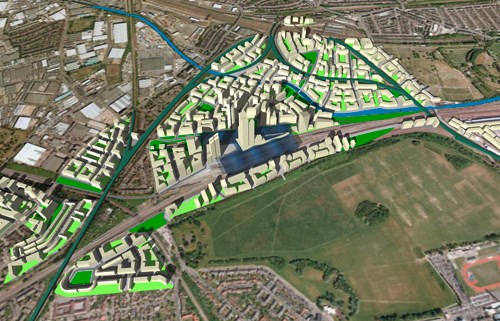
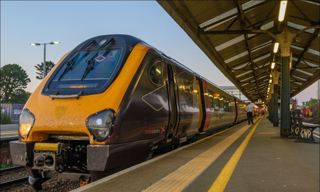
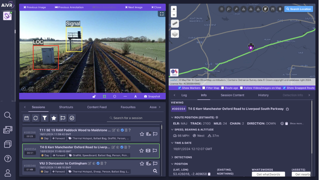
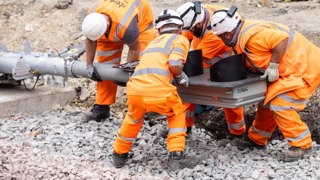
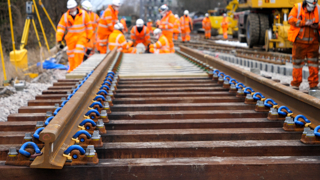










Login to comment
Comments
No comments have been made yet.